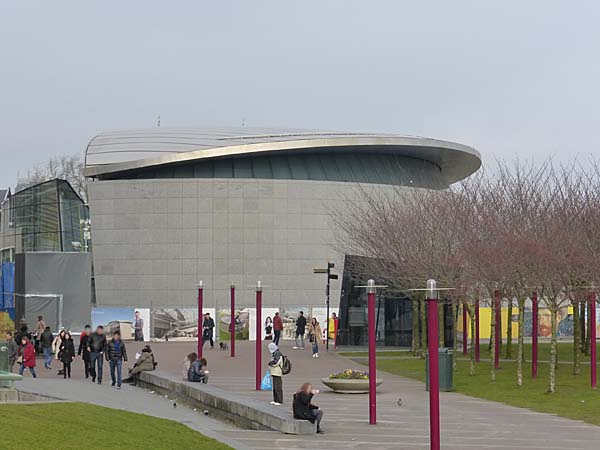Van Gogh
Museum Kurokawa Wing, Amsterdam, Holland

Architect
|
Kisho Kurokawa
|
Date Built
|
1999
|
Location
|
Museumplein
|
Description
|
Amsterdam's Van Gogh Museum is housed in
two buildings erected 20 years apart. In
1973 the main building designed by Gerrit
Ritveld opened for the first time (you can see
it on the right of the image below).
In 1999 the building shown at the top of the
page was added. Known as the Kurokawa Wing
or the Exhibition Wing, it represents a dramatic
departure from the design of the Gerrit
Building. The "Architravel" website points
out that Kurokawa is a Japanese architect with
an international reputation and experience of
designing a number of museums in his home
country. They add that, "... His
work is characterised by geometrical forms,
such as cones, ellipses and squares, and a
symbiosis between Eastern and Western
principles in philosophy and architecture.
For the new wing of the Van Gogh Museum he
created a sober design that accords
perfectly with the existing building.
Rational (Western) geometry forms a
symbiosis with Eastern asymmetry."
Kurokawa explains that, "... The new wing
was built in the open space adjacent to the
main building of the museum, which was the
last work of the Dutch Modernist architect
Rietveld. Considering the whole of the
landscape, 75% of the building's area
(excluding the main exhibition hall) was
constructed underground as an effort to
minimize the space it would have taken above
the ground. The new wing connects to the
main building through an underground
passage."
When I visited the museum in March of
2015 work was underway to add a glass structure
to the back of the Kurokawa building. Also
designed by
Kisho Kurokawa Architect & Associates, the
agency founded by the late renowned Japanese
architect Kisho Kurokawa, the new structure
will, "... create an
additional 800 m2 of surface area, meaning
the museum will be better equipped to
welcome the growing number of visitors. The
additional space also means the museum will
be able to host larger conferences and
receptions."
|
Close
Window

|



